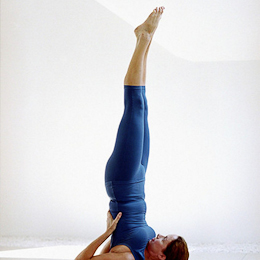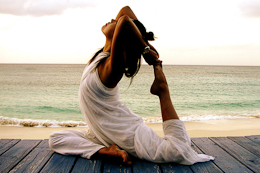Traditional Iyengar Yoga
Traditional Iyengar is highly focused on the eight limbs of yoga, first defined by Patanjali in his now famous (among yoga enthusiasts) book, Yoga Sutras. These eight limbs include:
An extension of Iyengar's reputation for using various equipment and devices to facilitate a greater ease in which the movements and poses can be performed is the emphasis on alternative poses when some become too difficult. Traditional Iyengar yoga leaves no room for errors like other more experimental yoga types. If an instructor observes a student performing a movement or pose improperly, the error is usually corrected as soon as possible. To this end, traditional Iyengar, like all yoga types, require that the individual perform all movements, series of movements, and poses correctly and with precision. Types of MovementsThere are many standing poses in traditional Iyengar yoga. These exercise leg muscles and increase balance and coordination as well improving circulation. Because of the precise poses, it takes time to get into proper positioning. Movements are not done quickly. On the contrary, aides are often used to help students achieve the poses. Through the use of these props, novices can enjoy the benefits of traditional Iyengar yoga safely. Mental and Physical RequirementsThe use of props and ease of pose substitution associated with Iyengar mean that there are few physical and mental requirements that you must meet to attend your first traditional class. Moreover, the focus on every detail of the movements within traditional Iyengar make it an ideal starting point for many beginning students. At the minimum, you should be open to critique as this is a normal part of the very vocal classes associated with Iyengar yoga. Equipment Requirements
Mental and Physical BenefitsMental
Physical
Aerobic Effect
Traditional Iyengar yoga is primarily focused on building leg strength, improving circulation and increasing balance, and offers little to those looking for an aerobic effect. Instructors of Iyengar yoga often discourage students from decreasing the time between poses to achieve an aerobic effect as this defeats the effectiveness of each pose. However, for individuals that would like to receive an increased level of cardiovascular work, consider performing the exercises in a heated environment before resorting to increased speed, which may sacrifice form. By utilizing this approach you will achieve the health benefits from elevating your heart rate and maintain the fitness benefits from still performing the poses correctly. Many yoga instructors and students prefer Iyengar as a traditional approach to yoga due to its strict adherence to proper form and encouragement of a lifestyle approach to yoga, including altering other activities like eating and leisure time. The primary purpose of Iyengar is to focus on the structural alignment of the body with a meticulous approach to each pose. This form of Hatha Yoga is very well suited to beginning students and those with disabilities that may prevent them from performing intense physical activity or more aggressive types of yoga. |
Copyright © 2025 FitnessHealth101.com All Rights Reserved
FITNESS TOPICS
FITNESS REVIEWS
FITNESS & HEALTH GLOSSARIES

